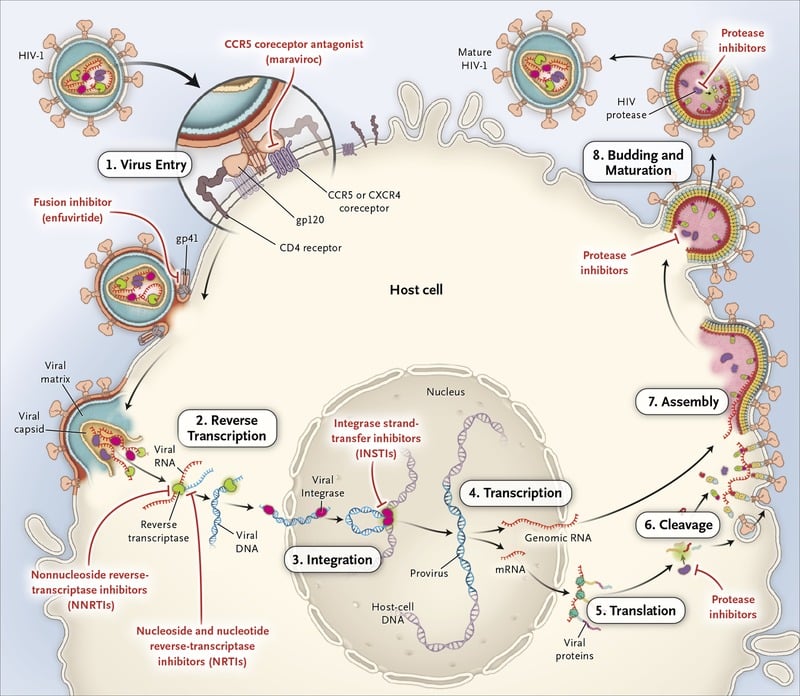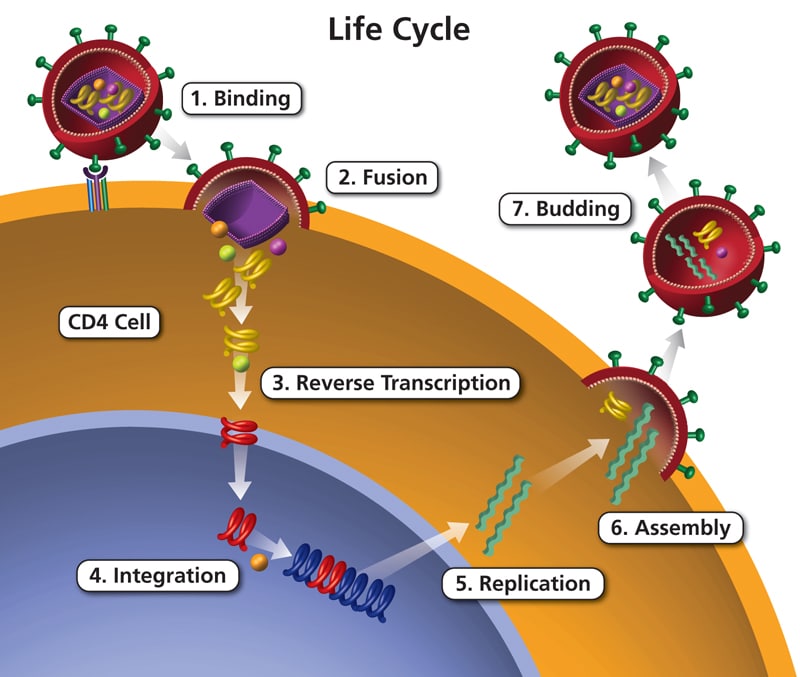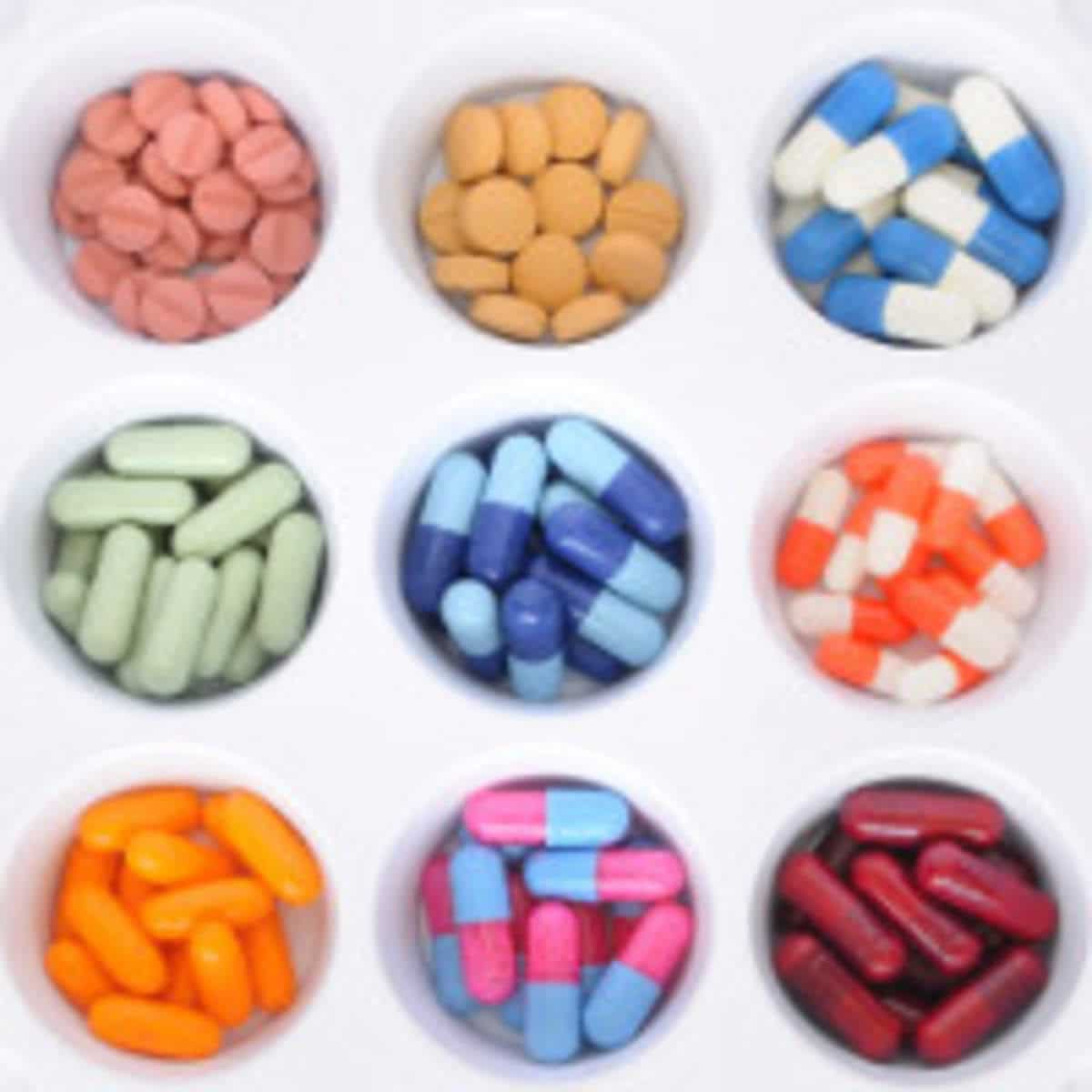Clinical Trials For The Treatment Of Hiv
There are limited data from clinical trials that inform guidance on the optimal timing or regimen for initial antiretroviral therapy of persons with HIV-2, though several clinical trials are in progress, including a trial comparing tenofovir DF-emtricitabine plus raltegravir versus tenofovir DF-emtricitabine plus lopinavir-ritonavir. The lack of data on HIV-2 treatment is due to a combination of factors, including the low prevalence of HIV-2 and the lower virulence of HIV-2 compared with HIV-1, which has made investigation of antiretroviral therapy for HIV-2 less of a priority than for those with HIV-1.
What Is An Hiv Test
An HIV test shows whether you are infected with HIV . HIV is a virus that attacks and destroys cells in the immune system. These cells protect your body against disease-causing germs, such as bacteria and viruses. If you lose too many immune cells, your body will have trouble fighting off infections and other diseases.
There are three main types of HIV tests:
- Antibody Test. This test looks for HIV antibodies in your blood or saliva. Your immune system makes antibodies when you are exposed to bacteria or viruses, like HIV. An HIV antibody test can determine if you have HIV from 312 weeks after infection. Thats because it can take a few weeks or longer for your immune system to make antibodies to HIV. You may be able to do an HIV antibody test in the privacy of your home. Ask your health care provider about at-home HIV test kits.
- HIV Antibody/Antigen Test. This test looks for HIV antibodies and antigens in the blood. An antigen is a part of a virus that triggers an immune response. If youve been exposed to HIV, antigens will show up in your blood before HIV antibodies are made. This test can usually find HIV within 26 weeks of infection. The HIV antibody/antigen test is one of the most common types of HIV tests.
- HIV Viral Load. This test measures the amount of the HIV virus in the blood. It can find HIV faster than antibody and antibody/antigen tests, but it is very expensive. It is mostly used for monitoring HIV infections.
Dont Miss: Does Nba Youngboy Have Hiv
What Is Hiv Drug Resistance
When HIV isnât fully controlled by HIV medicine, the virus makes copies of itself at a rapid rate. As HIV multiplies in the body, it sometimes mutates and produces new forms of the virus that may not be as sensitive to a particular medicine as the original virus. This is called drug resistance.
With drug resistance, HIV medicines that previously controlled a personâs HIV are no longer effective against new, drug-resistant HIV. In other words, the HIV medicines can’t prevent the drug-resistant HIV from multiplying. Drug resistance can cause HIV treatment to fail.
A person can initially be infected with drug-resistant HIV or develop drug-resistant HIV after starting HIV medicines. Drug-resistant HIV also can spread from person to person. Drug-resistance testing identifies which, if any, HIV medicines wonât be effective against your specific strain of HIV. Drug-resistance testing results help determine which HIV medicines to include in an HIV treatment regimen.
Taking your HIV medicine as prescribed helps prevent drug resistance.
You May Like: Can You Catch Hiv From Saliva
Discusses Physiology Pathophysiology And General Clinical Aspects As They Relate To A Laboratory Test
AIDS is caused by 2 known types of HIV. HIV type 1 is found in patients with AIDS, AIDS-related complex, and asymptomatic infected individuals at high risk for AIDS. The virus is transmitted by sexual contact, by exposure to infected blood or blood products, or from an infected mother to her fetus or infant. HIV type 2 infection is endemic only in West Africa, and it has been identified in individuals who had sexual relations with individuals from that geographic region. HIV-2 is similar to HIV-1 in viral morphology, overall genomic structure, and its ability to cause AIDS.
Antibodies against HIV-1 and HIV-2 are usually not detectable until 6 to 12 weeks following exposure and are almost always detectable by 12 months. They may fall to undetectable levels in the terminal stage of AIDS when the patients immune system is severely depressed.
Routine serologic screening of patients at risk for HIV-1 or HIV-2 infection usually begins with a HIV-1/-2 antigen and/or antibody screening test, which may be performed by various FDA-approved assay methods, including rapid HIV antibody tests, enzyme immunoassays, and chemiluminescent immunoassays. In testing algorithms that begin with these methods, supplemental or confirmatory testing should be requested only for specimens that are repeatedly reactive by these methods.
Read Also: Does Nba Youngboy Have Herpes
Main Differences Between Hiv

Don’t Miss: How Long Does Hiv Test Take To Come Back
Treatment Of Persons With Hiv
Individuals with HIV-1 and HIV-2 coinfection should undergo baseline genotypic resistance testing for HIV-1 resistance testing for HIV-2 is not commercially available in the United States. In this setting, if possible, monitoring of both HIV-1 and HIV-2 plasma RNA levels should be performed.
- Recommendation: The Adult and Adolescent ARV Guidelines recommend treatment of persons with HIV-1 and HIV-2 coinfection with 2 NRTIs in combination with an INSTI, even if the baseline HIV-2 plasma viral load is low or undetectable. All of the preferred regimens in the Adult and Adolescent ARV Guidelines for the treatment of HIV-1 have good activity against both HIV-1 and HIV-2.
When Should You Start Hiv Treatment
If you have HIV, itâs important to start treatment with HIV medicine as soon as possible after diagnosis,regardless of how long youâve had the virus or how healthy you are. HIV medicine slows the progression of HIV and can keep you healthy for many years.
It is especially important for people with HIV who have early HIV infection or an AIDS-defining condition to start HIV medicines right away.
People with HIV who become pregnant and are not already taking HIV medicines should also start taking HIV medicines as soon as possible to protect their health and to prevent transmitting HIV to their babies.
If you have been diagnosed with HIV and are not currently taking HIV medicines, talk to a health care provider about the benefits of getting on treatment.
Also Check: Can Hiv Positive Donate Plasma
Hiv Testing After Diagnosis
Additional tests are performed both after a person receives an HIV-1 diagnosis and throughout their treatment. These include:
- Viral load. The amount of virus in a persons blood is called viral load. When HIV-1 isnt treated, viral load will increase. In contrast, treatment with antiretroviral drugs can reduce viral load to undetectable levels.
- CD4 count. A CD4 count looks at the number of CD4 cells in a blood sample. Decreasing levels of CD4 cells signal damage to the immune system.
- Drug resistance testing. HIV-1 can become resistant to certain types of antiretroviral drugs. Because of this, drug resistance testing is performed to help inform which antiretroviral drugs can be used for treatment.
There are several bodily fluids that can transmit HIV-1. These include:
No Differences In Cellular Immune Responses Between
Fewer people infected with human immunodeficiency virus type 2 progress to acquired immunodeficiency syndrome, compared with those infected with HIV-1. To understand the immune mechanisms leading to slow progression in HIV-2 infection, cell-mediated immune responses were compared between the 2 infections in asymptomatic subjects with a
Also Check: Does Hiv Medication Make You Gain Weight
Stage : Acute Primary Infection
The early symptoms of HIV can feel like having the flu. Around one to four weeks after getting HIV, you may start to experience these flu-like symptoms. These normally dont last long . You may only get some of the symptoms and some people dont have any symptoms at all.
Symptoms can include:
- joint aches and pains
These symptoms happen because your body is reacting to the HIV virus. Cells that are infected with HIV are circulating throughout your blood system. In response, your immune system tries to attack the virus by producing HIV antibodies this process is called seroconversion. Timing varies but once you have HIV it can take your body up to a few months to go through the seroconversion process.
Having these symptoms alone does not mean you definitely have HIV. The only way to know if you have HIV is by taking a test. You should always visit your healthcare professional if youre worried about or think youve been at risk of getting HIV, even if you feel well and dont have any symptoms. They can then arrange for you to get tested.
HIV will not always show up in a test at this early stage, and you may need to test again later to confirm your result . Your healthcare professional will talk to you about the timing of your test and answer any concerns. Its important not delay speaking to a healthcare worker if you are worried about HIV.
What Is The Difference Between Hiv
There are two main types of the human immunodeficiency virus , HIV-1 and HIV-2. The difference between HIV-1 and HIV-2 are as follows
- HIV-1 is the most common type of HIV and accounts for 95% of all infections, whereas HIV-2 is relatively uncommon and less infectious.
- HIV-2 is mainly concentrated in West Africa and the surrounding countries.
- HIV-2 is less fatal and progresses more slowly than HIV-1.
Currently, only one antibody test can distinguish between antibodies to HIV-1 or HIV-2.
Read Also: How Is Hiv And Aids Diagnosed
Clinical Course Of Hiv
The clinical course of HIV-2 infection is generally characterized by a longer asymptomatic stage, lower plasma viral loads, and a lower mortality rate than HIV-1 infection.2,3 However, without effective antiretroviral therapy , HIV-2 infection will progress to AIDS and death in the majority of individuals.4 Concomitant HIV-1 and HIV-2 infection may occur, and the possibility of this coinfection should be considered when treating persons from areas with a high prevalence of HIV-2.
Different Types Of Hiv Tests

The biggest difference between HIV and AIDS is that HIV is a virus that infects the body and compromises its ability to fight off other diseases, while AIDS is the final stage of an HIV infection in which the persons immune system is so compromised by HIV that opportunistic infections and diseases occur.
A person must be tested for the virus to determine whether they have HIV. The following are the three types of HIV tests:
- Nucleic acid tests involve drawing blood from the persons vein and detecting HIV in the blood. NAT is the fastest and most expensive HIV test.
- Antigen/antibody tests detect the presence of HIV antibodies and antigens in the blood. The blood is drawn from a vein or extracted via a finger prick.
- HIV antibody tests detect HIV antibodies in the persons blood or oral fluid. Tests involving drawing blood from a vein can detect antibodies sooner after the initial infection than either a finger prick or oral fluid.
You May Like: Nba Youngboy Got Herpes
Also Check: How Soon After Sex Can I Get Tested For Hiv
Box : Wadsworth Center Bloodborne Viruses Laboratory Services
- The Wadsworth Center offers HIV-2 viral load testing, free of charge, for patients and healthcare providers in New York State. To submit a specimen for HIV-2 viral load testing, please contact the Bloodborne Viruses Laboratory at 474-2163. Specific services include:
- Quantitative detection of HIV-2 RNA in plasma samples for baseline and subsequent monitoring of response to ART in patients with confirmed HIV-2 infection.
- HIV-2 RNA viral load testing during pregnancy. Contact the lab at 474-2163 early in the patients pregnancy to discuss the protocol and timing for testing.
- HIV testing for all newborns exposed to HIV in New York State, free of charge.
- If a sample is reactive for HIV-2 antibodies, the Pediatric HIV Testing Service will perform a reverse transcription polymerase chain reaction test for qualitative detection of HIV-2 RNA.
Note: HIV-2 phenotypic and genotypic resistance testing is not offered at Wadsworth or commercially available in the United States.
Observational Studies And In Vitro Data
Up to this point, most of the data on HIV-2 treatment have come from small observational studies. A case series involving 5 patients with HIV-2 reported very good virologic and CD4 treatment responses with a raltegravir-based regimen. Similar promising preliminary results were seen in a pilot trial of raltegravir plus tenofovir DF-emtricitabine. There are no clinical data on the use of bictegravir-tenofovir alafenamide-emtricitabine for the treatment of HIV-2, but in vitro data suggest that HIV-2 is highly sensitive to bictegravir. One case report and data from one clinical trial have shown favorable results with cobicistat-boosted elvitegravir (in a single tablet regimen of elvitegravir-cobicistat-emtricitabine-tenofovir DF.
Also Check: Can Hiv Be Transmitted If On Medication
Viral Protein X Is Unique To Hiv
HIV-2 encodes auxiliary protein VPX. VPX is related to VPR . Like VPR, VPX is incorporated into virions. HIV-2 VPX is required for efficient infection of nondividing cells . Like VPR, VPX activates/modulates a ubiquitin ligase complex. One target of VPX appears to be an interferon-inducible host cell restriction factor called Sterile Alpha Motif and HD Domain Protein 1 , an enzyme with important roles in nucleic acid metabolism. SAMHD1 specifically blocks reverse transcription of retroviruses in MDM and DCs. In fact, expression of VPX in such cells renders them susceptible to infection by retroviruses other than HIV-2.
Debra A. Kessler RN, MS, Alexandra Jimenez MD, in, 2019
Recommended Reading: Cookie Johnson Hiv Positive
Diagnostic And Monitoring Assays For Hiv
In the appropriate epidemiologic setting, HIV-2 infection should be suspected in persons who have clinical conditions that suggest HIV infection but who have atypical serologic results .5 The possibility of HIV-2 infection should also be considered in the appropriate epidemiologic setting in persons who have serologically confirmed HIV infection but who have low or undetectable HIV-1 RNA levels, or in those who have declining CD4 T lymphocyte cell counts despite apparent virologic suppression on ART.
Also Check: Can You Get Hiv From Sex Without Ejaculation
What About Reports Of Cured People
Only two people, Timothy Brown and Adam Castillejo, have been completely cured of HIV.
During treatment for acute myeloid leukemia, Brown received a bone marrow transplant from a donor who had a genetic mutation that leads to HIV resistance.
After the transplant, doctors could no longer detect HIV in Browns body. The exact reason why is still unknown.
Castillejo also received a bone marrow transplant, but to treat lymphoma. Like in Browns case, the donor had a genetic mutation that leads to HIV resistance.
Reports of other cured people may actually refer to long-term nonprogressors . While progression to AIDS is still possible without antiretroviral drugs, LTNPs are able to maintain stable viral loads and CD4 cell counts for long periods of time.
About 5 to 15 percent of people living with HIV are LTNPs. LTNPs can also be broken down further based off their viral load:
- Viremic controllers are people who maintain a viral load at very low, but still detectable, levels.
- Elite controllers are people who maintain viral load at undetectable levels. Elite controllers are very rare. Its estimated that they make up less than 1 percent of people living with HIV.
There have also been reports of HIV-1 control in people who have previously taken antiretroviral drugs. These people are called post-treatment controllers and are also rare.
Hiv 1 Vs Hiv : Whats The Difference
There are two distinct forms of HIV that currently exist: HIV 1 and HIV 2. In technical terms, HIV 2 is more than 55% genetically different from HIV 1. However, the main practical difference between the two relates to geography and prevalence. HIV 1 is very often referred to as just HIV it is the most common of the two strains and it is found worldwide. HIV 2, by contrast is isolated to areas in West Africa and some parts of India. Here, well explain everything there is to know about HIV 1 vs HIV 2, including symptoms, testing, and treatment options:
Recommended Reading: Can Cbc Test Detect Hiv
Do You Need To Keep Taking Hiv Treatment
Yes. ART is not a cure and the virus remains in your body, even when your viral load is undetectable, so you need to keep taking your HIV medicine as prescribed. If you stop taking your HIV medicine, your viral load will quickly go back up.
If you have stopped taking your HIV medicine or are having trouble taking all the doses as prescribed, talk to your health care provider as soon as possible. Your provider can help you get back on track and discuss the best strategies to prevent transmitting HIV to your sexual partners until your viral load is confirmed to be undetectable again.
Get tips on taking your HIV medicine as prescribed.
Whats The Difference Between Hpv And Herpes

HPV is caused by the human papillomavirus virus while herpes is caused by the herpes simplex virus . There are more than 100 strains of HPV and two strains of HSV. HSV-1 usually causes cold sores, although it can cause genital lesions through oral sex. HSV-2 is the virus strain that usually causes genital herpes.
You May Like: Does Nba Youngboy Have Herpes
Don’t Miss: How Does Hiv Affect The Body Physically